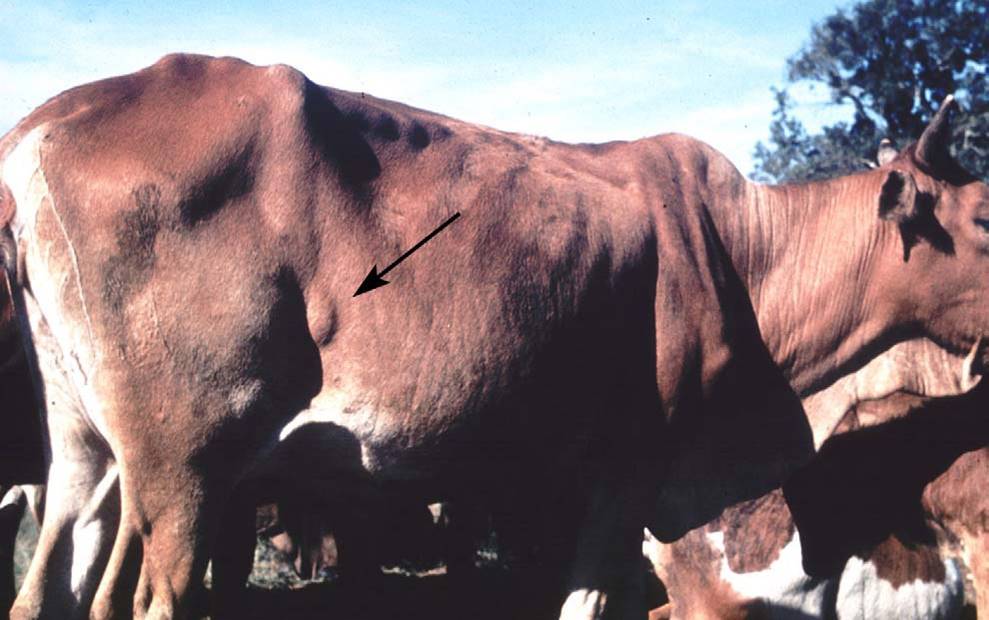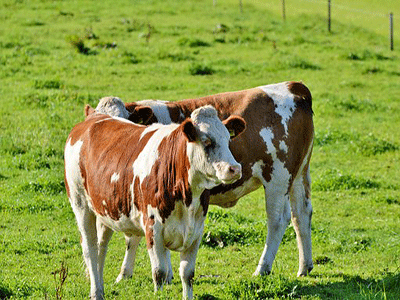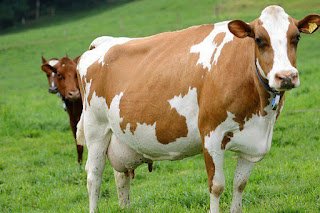
Characteristics of a healthy animal
i. Cheerful at all times with bright eyes while the tail and ears help it
chase away flies
ii. Eat and chew, drink water well every day
iii. Show cooperation and walk together in a group
iv. Walk well
v. It starts and runs away when chased by a dangerous animal such as
a wolf, hyena, leopard, lion.
vi. Its body has a great ability to transform the food it eats to produce
sufficient products such as milk.
vii. It looks strong and for those who continue to grow, they gain
weight in a short time
viii. For an animal that is milked frequently, screaming to find
its baby, the udder is full of milk, the nipples are sometimes enlarged
on the side to fill with milk
ix. The animal’s skin is often excited when insects crawl on it
x. For males, they are eager to mount females that come into heat.
Their bodies are well developed. The testicles are well developed and sit well in their place
(i.e. between the legs)
xi. The nose and lips are always moist.
xii. The skin has the desired softness and the fur is shiny.
xiii. Usually when you approach an animal if it is sitting down, it must get up.
Symptoms of a Sick Animal
i. Lack of appetite for food and water
ii. Body atrophy and fatigue
iii. Animal walks slowly and with difficulty and often falls behind its peers
iv. Its nose and lips appear dry.
v. Decreased production levels such as milk. Males become lethargic
and lower their necks and lose interest in mounting females that are
in heat.
Sources of Disease
Many livestock diseases are spread by microorganisms that enter the bloodstream
and cause fever and later serious consequences. Many livestock diseases
are caused by sources outside the animal’s body, such as a dirty environment
in which the animal lives, objects that cause wounds (sharp objects) cause
wounds where parasites can lodge. The animal can also get sick from
internal conditions such as nutritional deficiencies, such as: minerals, and
hereditary diseases.
Examples of these pests are;
Bacteria
Examples of diseases caused by bacteria are cholera, blackquarter, anthrax,
tuberculosis, brucellosis (abortion disease) and udder disease
. Bulls have swollen testicles.
Viruses Otitis
Examples of diseases caused by viruses are rabies,
foot and mouth disease and rinderpest.
Protozoa
Diseases caused by protozoa are cold sores, severe cold sores,
blood cold sores, heart cold sores and scabies. Note: All scabies diseases are spread by ticks, while scabies is spread by fleas.

Poor nutrition.
Deficiency of nutrients in livestock feed causes adverse effects on the body as
follows;
i. Causes females to not come into heat early
ii. Calves are born with immature organs
iii. Reduced milk production
iv. Decreased production rate
Wounds/bruises.
Through wounds or bruises, parasites that cause lice can enter the
animal’s body. Hereditary diseases
If one of the parents has a hereditary disease then there is a high chance for
one of the calves that will be born will inherit the disease. Diseases spread by ticks.
ECF .
Its symptoms
i. High fever up to 42 degrees Celsius
ii. Foam from the mouth and nose
iii. Diarrhea mixed with mucus and blood
iv. Very swollen and warm glands
v. Stop eating
vi. Blurred vision
vii. Death after one to two weeks Treatment Butalex, Parvexon, treatment should be accompanied by one injection to remove swelling in the lungs if the condition has already occurred. Use Multivitamin to increase appetite and Raxis to remove fluid from the lungs.
Prevention/prevention:
Pay attention to proper bathing and ECF vaccination
Anaplasmosis
Its symptoms
i. Fever up to 42C
ii. Loss of appetite
iii. Hard stools with mucus and foul odor
iv. Death after 8 to 10 days Treatment i. Antibiotics such as Oxytetracycline ii. Imizol.
Prevention
Pay attention to proper
Babesiosis -is a disease that causes blood in the urine.
Its symptoms.
i. Urine that is dark purple in color
ii. Urine that comes out little by little and for a long time
iii. Fever up to 40C
iv. Loss of appetite
v. Hard stools or diarrhea sometimes
vi. Death after 1 week
Treatment
with Berenil is supported by injectable antibiotics such as oxytetracycline (OTC) and also use
a multivitamin to increase appetite.
Prevention:
Pay attention to proper bathing.
Heart water Disease.
Symptoms
i. Dizziness and collapse,
ii. Death after 2 days
Treatment
Injectable antibiotics such as oxytetracycline.
Remember treatment must be done as early
as possible
Prevention/prevention
Pay attention to proper bathing




